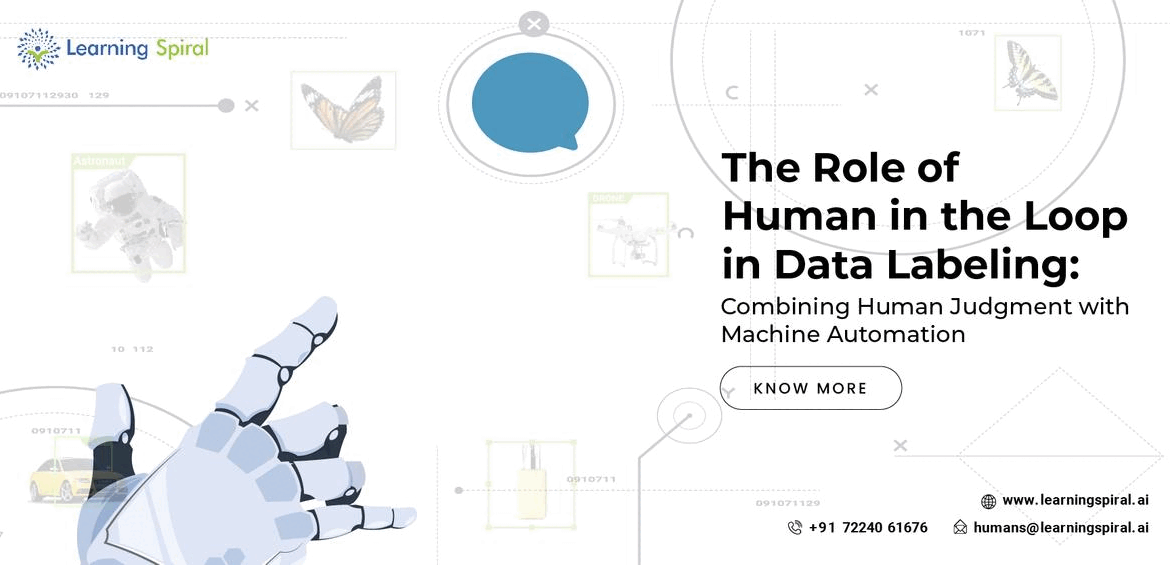Data labeling can be categorized into two different approaches: one is the automated approach, where machine learning models and AI take care of the complete labeling of data, and the other is the manual approach. Now, the manual method includes direct interference of humans to ensure accurate delivery of data and sources. This is how the human-in-the-loop (HITL) approach comes into play.
In the HITL method, human judgment and machine automation work in tandem to ensure accuracy, efficiency, and, ultimately, the success of AI applications. In my opinion, this secret weapon is the ultimate method for top-level data labeling, although it is considered to be more time-consuming than the automated labeling approach.

Let’s explore how the rumor of machines doing a better job of data labeling is cut down by the HITL approach:
1. Machine Blind Spots:
Human language is complex, riddled with ambiguity, sarcasm, and cultural references. Even the most sophisticated AI struggles to grasp these nuances. A machine might confidently label a picture of a person smiling as “happy,” but a human can recognize the subtle tension in their eyes and correctly label it as “nervous.”
This human understanding is crucial for tasks like sentiment analysis, social media monitoring, and even medical diagnosis.
2. Edge Cases and Exceptions:
Data inevitably contains outliers, edge cases, and unexpected scenarios that throw machine learning models for a loop. Humans, with their experience and adaptability, can identify these exceptions, correct misinterpretations, and improve the model’s ability to handle the unexpected.
This is critical for applications like self-driving cars, fraud detection, and anomaly detection.
3. Ethical Considerations and Bias Mitigation:
AI algorithms are only as good as the data they’re trained on. Biased data can lead to biased results, perpetuating discrimination and harm. Humans, acting as ethical guardians, can identify and flag biased data, ensuring fair and responsible AI development.
This is especially important in areas like healthcare, criminal justice, and recruitment.
4. The Synergy of Automation and Expertise:
HITL isn’t about pitting humans against machines. It’s about leveraging their strengths. Machines can rapidly label large volumes of data, freeing up human experts to focus on complex, ambiguous cases. Meanwhile, human expertise guides machine learning models towards better accuracy.
This collaborative approach allows us to label data faster, cheaper, and more accurately than ever before.
The HITL approach is constantly evolving. Innovative techniques like active learning, where machines select the most informative data points for human input, are further optimizing the workflow. With advancements in user interfaces and annotation tools, the process is becoming more intuitive and engaging for human reviewers.




